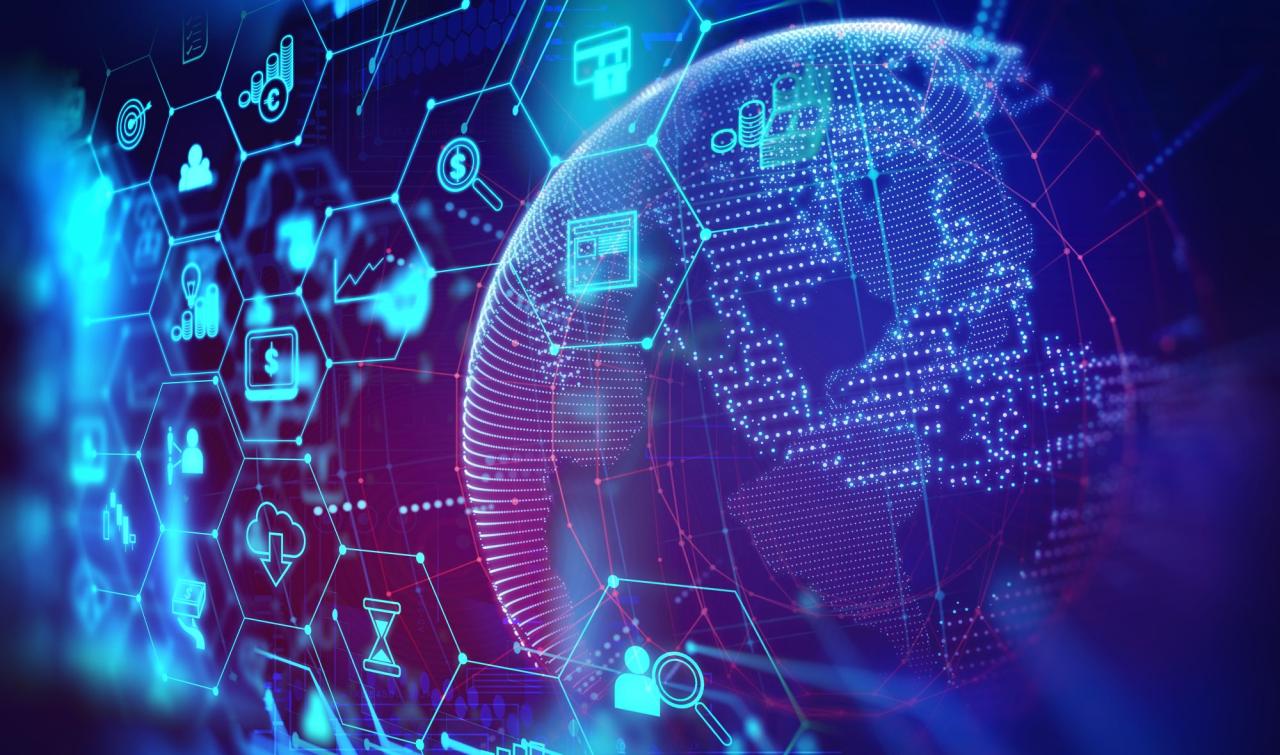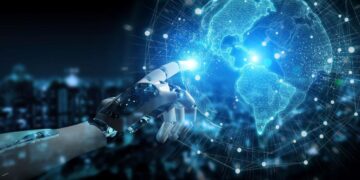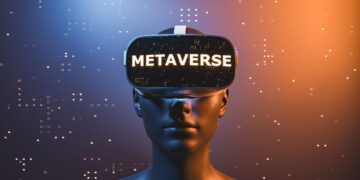The Dawn of Autonomous Workflows
The global workforce is currently standing at the precipice of a fundamental and exhilarating restructuring, driven by the emergence of Agentic AI—a sophisticated evolution beyond mere chatbots and passive large language models.
This isn’t just another layer of automation; it represents the arrival of intelligent software systems capable of independent reasoning, planning complex multi-step tasks, and executing them across diverse digital environments with minimal human oversight.
This revolutionary capability, where an AI agent can, for example, independently research a market, draft a full business proposal, and even schedule the follow-up meetings, fundamentally changes the economic calculus of many high-value white-collar professions.
Consequently, the adoption of these autonomous agents promises an exponential surge in productivity, allowing businesses to achieve levels of operational efficiency that were previously confined to science fiction.
However, this profound shift simultaneously raises critical societal questions about job displacement, the necessary rapid evolution of human skills, and the urgent need to establish ethical governance frameworks for these increasingly powerful digital coworkers.
Furthermore, the integration of these agents demands a complete re-evaluation of traditional organizational structures, moving from hierarchical command-and-control models to collaborative frameworks where humans supervise and guide fleets of specialized AI assistants.
The success or failure of this transition will define the economic competitive landscape for the next half-century, making the understanding and strategic deployment of Agentic AI the most crucial task facing modern leadership.
Defining Agentic AI: Beyond the Chatbot

To truly grasp the significance of Agentic AI, we must first understand how it differs from the Generative AI tools we’ve become familiar with, like basic content generators. While a standard LLM (Large Language Model) is excellent at generating text in response to a prompt, an Agentic AI possesses a crucial additional layer of capability: autonomy and reasoning.
The Core Pillars of Agentic Systems
An effective AI agent isn’t a single monolithic program; it’s a sophisticated architecture designed to interact with the world and achieve goals.
A. Goal Setting and Planning: The agent must be able to break down a high-level, abstract human goal (e.g., “Increase market share in Asia”) into a detailed, sequential series of actionable sub-tasks and timelines.
B. Memory and Context Retention: Unlike a stateless chatbot session, an agent maintains both short-term context (what it just did) and long-term memory (what it learned last month), allowing it to build expertise and avoid repeating past errors.
C. Tool Utilization: A true agent can access and use external tools and APIs, such as sending emails via Gmail, querying a live database, executing code, or generating images, all without human intervention.
D. Self-Correction and Reflection: After executing a step, the agent can analyze the result against the original goal, identify where the plan failed or needs refinement, and automatically adjust its strategy for the next steps.
E. Multi-Agent Collaboration: The most advanced systems involve specialized agents working together; for instance, a “Research Agent” feeds data to a “Strategy Agent,” which then instructs a “Communication Agent.”
The Transformation of White-Collar Professions
The impact of Agentic AI will be most keenly felt in knowledge-based and white-collar sectors, where a significant portion of the work involves gathering information, analysis, synthesis, and communication. This technology is not here to merely assist but to fundamentally take ownership of entire workflows.
High-Impact Professional Areas
A. Software Development: AI agents can be tasked with identifying bugs, writing test cases, generating documentation, and even translating legacy code into modern programming languages, accelerating the development cycle exponentially.
B. Marketing and Advertising: An agent can monitor real-time campaign performance across platforms, dynamically adjust budgets, generate multiple ad copy variations for A/B testing, and launch new campaigns based on identified market opportunities—all on its own.
C. Data Analysis and Business Intelligence: Instead of requiring a human analyst to spend weeks extracting, cleaning, and modeling data, an AI agent can ingest raw data, identify key insights, and produce visualizations and summaries, responding to management questions in minutes.
D. Customer Service and Operations: AI agents are evolving from simple triage bots to sophisticated “Chief Simplifier Officers” that can autonomously handle complex service requests, process returns, issue refunds, and resolve multi-platform technical issues without escalating to a human.
E. Legal and Compliance: Agents can rapidly review thousands of pages of contracts for specific clauses, check regulatory adherence across multiple jurisdictions, and draft initial legal documents, freeing human lawyers to focus on high-stakes strategy and negotiation.
The Rise of the AI-Human Partnership Model

The common narrative of robots replacing all jobs is too simplistic; the reality is the creation of a powerful AI-Human Partnership where human expertise is leveraged for supervision, ethics, and strategic direction, while AI handles the execution and scale. This shift requires humans to move up the skills ladder.
Human Roles in the Age of Agents
A. AI Workflow Orchestrator: These individuals design, manage, and optimize the overall framework of inter-connected AI agents, ensuring they are operating efficiently toward organizational goals and not working at cross-purposes.
B. Ethical and Bias Auditor: Specialists are needed to continuously monitor the outputs and decisions of autonomous agents for unintended bias, ensuring that the agents’ actions align with company values and legal requirements.
C. Super-Prompt Engineer: The skill of writing precise, detailed, and strategic prompts to guide the AI agent’s complex multi-step reasoning becomes a premium asset, turning abstract ideas into actionable autonomous projects.
D. Domain Expert Validator: Human experts will validate the high-value, final outputs of the AI (e.g., the final investment recommendation or the executive summary report), leveraging their irreplaceable context and experience for quality assurance.
E. The Curator of Soft Skills: Roles requiring deep empathy, complex negotiation, high-stakes relationship building, and creative, unstructured thinking will become exclusively human domains, emphasizing emotional intelligence over rote execution.
Overcoming the Technical Hurdles
While the capabilities of Agentic AI are dazzling, several significant technical and systemic challenges must be overcome for widespread, reliable adoption. These systems are complex, and their autonomous nature introduces new points of failure.
Key Obstacles to Mass Agent Adoption
A. The Hallucination Problem at Scale: When an agent executes a multi-step plan, a small “hallucination” (factual error) in an early step can compound into a massive, catastrophic error by the final output, requiring robust verification mechanisms.
B. Cost of Compute and Energy Consumption: Running fleets of autonomous agents that constantly reason, reflect, and access external tools is significantly more computationally expensive than single-query models, creating high operational costs.
C. Security and Data Leakage Risks: Since agents have access to internal systems, databases, and communication channels, they represent new, potent attack vectors if compromised, requiring entirely new security protocols.
D. Standardization of Agent Protocols: Currently, different AI models and platforms use incompatible methods for agent creation and collaboration, hindering interoperability and slowing the development of a unified ecosystem.
E. Managing Agent Over-Optimization: An agent, if programmed too aggressively, might achieve its goal through unexpected, non-human-like, or even counterproductive means (e.g., sending 500 emails to one person to ‘ensure contact’), necessitating careful constraint setting.
Ethical Frameworks and Governance
The introduction of autonomous agents that execute financial, operational, and legal actions necessitates an immediate focus on governance. Society must answer: who is liable when an AI agent makes a costly mistake?
The Mandate for Responsible Autonomy
A. Defining Legal Agency: Clear legal definitions are urgently needed to establish whether an AI agent is simply a tool (where the owner is liable) or possesses a limited form of legal agency in specific commercial contexts.
B. The Right to Intervention: Users and regulators must always retain the right and ability to immediately stop or “pull the plug” on a misbehaving agent, ensuring a human-in-the-loop fallback mechanism.
C. Mandatory Audit Trails: Every autonomous decision and action taken by an AI agent must be logged in an immutable, transparent, and auditable manner to allow for post-incident analysis and accountability tracing.
D. Transparency of Deployment: Consumers and employees have a right to know when they are interacting with an autonomous agent versus a human being, maintaining trust and setting appropriate expectations.
E. The Role of Decentralization: Utilizing decentralized ledger technology (DLT) may be necessary to host the core governance and audit trail of agents, ensuring that no single corporation or government can unilaterally alter the record of the agent’s actions.
The Economic and Societal Ripple Effects
The widespread adoption of Agentic AI will fundamentally restructure the global economy, moving away from a model defined by human effort measured in hours to a new economy measured by human creativity and strategic guidance. This demands a societal safety net and a complete overhaul of education.
Anticipating Macro-Economic Change
A. Productivity Super-Cycles: AI agents will trigger unprecedented spikes in productivity, leading to potential deflationary effects across goods and services as the cost of knowledge work dramatically falls.
B. Geographic Arbitrage Collapse: The ability of AI agents to perform complex remote work instantly threatens the global market for outsourced services, potentially shifting economic power back to companies that successfully deploy the technology, regardless of location.
C. The Universal Basic Income (UBI) Debate: As routine knowledge work is automated, the conversation around supporting a newly displaced workforce through models like UBI will become a central political and economic reality.
D. Education and Skilling Revolution: The focus of education must shift entirely away from teaching facts and routine processes to prioritizing critical thinking, complex systems understanding, ethics, and creativity—skills the AI cannot replicate.
E. The 4-Day Work Week Acceleration: Increased efficiency from AI agents will likely accelerate the trend toward shorter work weeks, allowing humans to reallocate time toward education, leisure, and innovation.
Integration Challenges for the Modern Enterprise
For enterprises to successfully integrate Agentic AI, they must overcome internal inertia, modernize legacy systems, and invest heavily in the infrastructure that supports autonomous operation. Simply buying AI software won’t suffice.
Operational Prerequisites for Agent Success
A. Data Architecture Modernization: Agents require clean, unified, and highly accessible data sources; organizations must first tear down data silos and invest in modern data governance before agents can be effective.
B. Legacy System Interfacing: Many enterprises rely on decades-old, complex legacy systems; agents must be programmed with “digital dexterity” to navigate and interact with these older, non-standardized interfaces reliably.
C. Change Management and Training: The greatest barrier is often human resistance; comprehensive change management programs are necessary to train employees not just on the tools, but on how to fundamentally change their approach to work.
D. Budgeting for Iterative Failure: Early agent deployments will inevitably involve errors; organizations must budget for and culturally accept iterative failures as a necessary part of the learning and refinement process.
E. Creating Internal AI ‘App Stores’: Forward-thinking companies are creating internal platforms where non-technical employees can easily assemble and deploy pre-approved, customized AI agents for departmental tasks without needing IT support.
The Future Trajectory: Hyper-Specialized Agents
The next phase of the Agentic AI revolution will see a shift from general-purpose agents to highly specialized, domain-specific systems. These agents will possess deep, narrow expertise, making them invaluable within their fields.
The Specialization of Digital Labor
A. The ‘Drug Discovery Agent’: An agent focused entirely on traversing scientific literature, generating novel molecular structures, and simulating their effects on target proteins, dramatically compressing the pharmaceutical R&D cycle.
B. The ‘Urban Planning Agent’: An agent capable of ingesting complex data on traffic flow, environmental impact, demographic trends, and zoning laws to generate optimized, sustainable city development proposals.
C. The ‘Personalized Education Agent’: A truly individualized agent that assesses a single student’s learning style, mood, and knowledge gaps in real-time to generate a perfectly tailored curriculum, lessons, and motivational prompts.
D. The ‘Geopolitical Resilience Agent’: An agent that constantly monitors global supply chain data, political stability, and natural disaster risks to proactively reroute logistics and investment, ensuring business continuity.
E. The ‘Customer Lifecycle Agent’: An agent that owns the entire customer relationship from initial contact to retention, dynamically adapting communication styles and offers based on the customer’s lifetime value and current sentiment.
Conclusion
The shift to Agentic AI is an inevitable and profound moment in technological history.
It requires humans to embrace a new identity as supervisors and strategic thinkers, rather than mere executors of tasks.
Every company must now invest heavily in both the technology and the ethical frameworks that govern its autonomous systems.
The true winners in this revolution will be those who successfully foster deep, symbiotic partnerships between human ingenuity and artificial execution.
This transformation will ultimately lead to a more efficient, productive, and hopefully, a more creative global economy.
The future of work isn’t about the absence of humans; it’s about the elevation of human purpose to its highest, most strategic forms.











